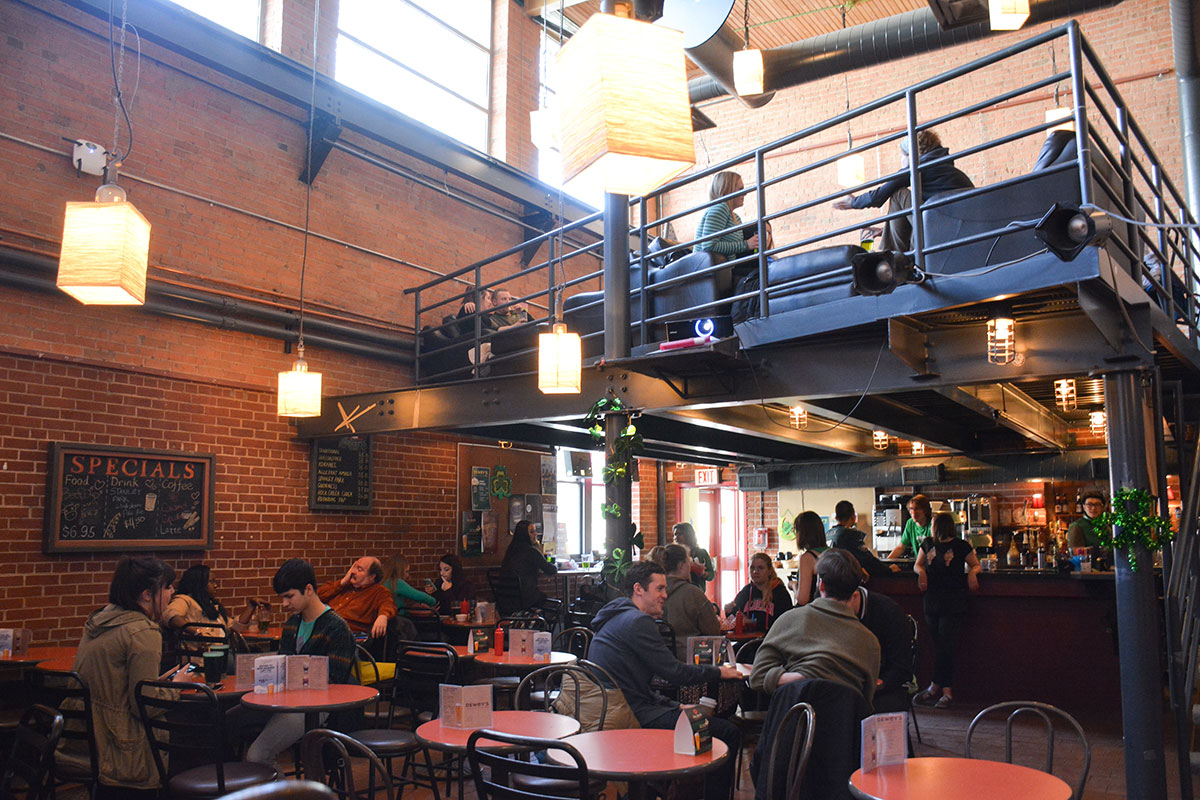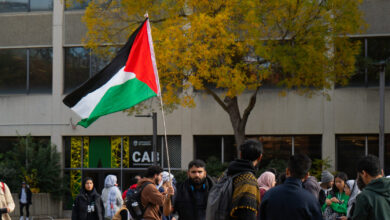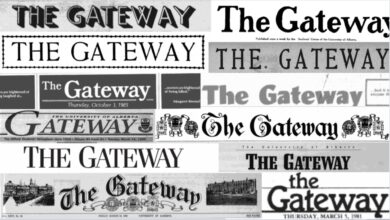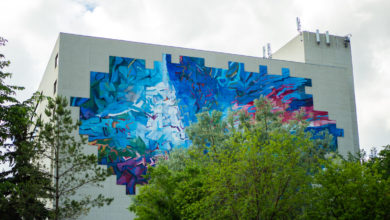The Dewey’s Debacle
 Lara Kmech
Lara KmechWith the 2013 and 2014 fiscal years yielding a net deficit of $108,686, Dewey’s has put a noticeable hole in the Students’ Union’s pocket — and this trend isn’t new.
The restaurant and lounge in the Old Power Plant building has been losing the SU money since 2002, with the worst financial spell occurring in 2007 and 2008, when the business lost almost $400,000 in two years.
The SU depends on its businesses for 56 per cent of its revenue, with only 29 per cent coming from Students’ Union fees paid by students. Why then, with growing concerns about poor service, would the SU continue running this financially toxic asset?
The use of the building dates back to 1978 when it was renovated for use by the Graduate Students Association (GSA) to operate a
restaurant and music venue, the PowerPlant. The GSA eventually found the location unprofitable and the SU took the reins of the failing business in 1997, making it the first SU business outside the SU building.
The SU’s current Vice-President (Operations and Finance) Cory Hodgson says that Dewey’s “as we know it” has only been in operation since 2008. In 2007, the university took back control over the west side of the bar, in exchange for reducing rental fees for the SU. Following the size reduction, Hodgson says the space has become “fundamentally different” than the nightclub atmosphere it once was, shifting to more of a “bistro-style lunch bar.”
The Old Power Plant building is owned by the university, while the SU pays $76,000 a year in rent and utilities for the space. Dewey’s is the only SU business which pays full rent, and Hodgson says this affords Dewey’s different challenges not necessarily faced by other SU businesses.
“Even the space we have right now is sometimes difficult to work with. There are limited things we can do with it because it’s not our space,” he says.
Aside from the significant costs pressing Dewey’s, other factors, like location, impact the bar’s success, compared to Room At The Top (RATT). RATT has not lost the money Dewey’s has — in fact, it has turned a profit for the SU every year since 2004, when it lost $20,000. In addition to not paying rent, RATT is able to also draw more customers to the other businesses located inside SUB.
Based on focus groups conducted by the SU, Hodgson speculates that SUB is already densely populated, whereas less people casually hang out in the Dewey’s area.
Dewey’s is also limited by a pub policy imposed by the university which many bars are not subject to. The lounge’s manager, Monique Vulic, says the bar is unable to offer specials on shooters, and that last call is no later than 1 a.m.
Despite the challenges, leaving the building is off the table. The SU’s dedication to the Old Power Plant has not wavered through the past few years of hardship, having just resigned a five-plus-five year lease, in 2013
Hodgson is dedicated to the SU maintaining stakeholder status with the Old Power Plant building to ensure future developments in the building benefit students.
“I don’t think it’s advisable (for the SU to leave the building), because we won’t be at the table when we talk about the future of the building,” Hodgson says. “Part of the important part of us running that operation is maintaining a stake in that building and being tenants there.”
Hodgson mentions the safety of students is part of the SU’s “philosophy” of having campus bars. Venues like Dewey’s, he says, give students an option on campus to “engage in the behaviour they’re going to engage in.”
“(At) other places, their primary focus is profit and that’s all they care about. They don’t have those kind of safety considerations that we put in first,” he says. “So I think sometimes a direct comparison isn’t exactly fair because we operate them to make money, but that’s not the be all end-all for us.”
Coming off a rocky history in the red, Hodgson believes the campus eatery is slowly improving.
“We’re seeing really positive results this year,” he says. “This year, we’ve done a lot better revenue-wise, but expenses are high that we don’t have at RATT.”
Early sales figures are looking good, according to Vulic. The staff at Dewey’s increased too, from 14 last year to 19 this fall. Hiring only 35 per cent more staff, Dewey’s saw a 50 per cent increase in sales between September 2013 and this year — a near- $24,000 increase — and 30 per cent in October. Part of the 50 per cent percent sales increase from last year at Dewey’s included a five per cent increase in food sales.
The drop in sales as the semester moves forward is characteristic of the usual trend, with students spending more time and money in Dewey’s near the start of the term.
After arriving at Dewey’s in 2013, Vulic helped implement an overhaul of the lounge’s operations. Most of the changes under Vulic were made this past summer under advisory from the Business Advisory Group (BAG), established by last year’s Vice-President (Operations and Finance) Josh Le. Changes included the removal of several pool tables to increase the bar’s seating capacity and the removal of carpet flooring with the addition of several loveseats in the upper loft.
Perhaps most noticeably, Dewey’s switched to a table service under recommendation from BAG, which found that students were often turned off by the long line-ups, and would leave the establishment before even sitting down.
Despite its criticisms — including long wait times and incorrect orders — both Hodgson and Vulic are confident that the switch to table service is benefitting the business.
“It’s all new staff, new point of sale, new service model,” Vulic says. “The transition period is expected, but we’re definitely improving, I think … our team is great. They’re motivated, and they’re excited.
“I think the changes we’ve made will probably stick. We just need to work on our customer service standards and benchmarks. It’s just to reach those goals.”
Because bottom-line revenue information for Dewey’s won’t be available until the end of the year, we are yet to see if the SU has managed to turn the struggling lounge around.
In the meantime, all there’s left to do is hope for the best — and maybe grab a burger at the quaint campus lounge between classes.
“I feel really positive about the direction that we’re headed,” says Hodgson. “We really have had revenue numbers skyrocket quite a bit.”





Damn, I wish I could read.
From what I’ve been hearing, a substantial amount of people (international students) tend to go to Steel Wheels after Japanese/Chinese Conversation Club meetings. That seems like a missed opportunity to me. If we would do something from keeping those demographics from going off campus to get sloshed every week, might bring in a bit more revenue on a weekly basis.
I’m curious to know if the revenues/profits from RATT include the potential opportunity cost of not being able to charge rent to a tenant. An entire floor of the Students’ Union Building would seem like a pretty desirable location.
When the SU took over the Power Plant in 1998 it was THE place to party on Friday nights. In fact many local bar owners complained that a “subsidized” campus bar was stealing their customers.